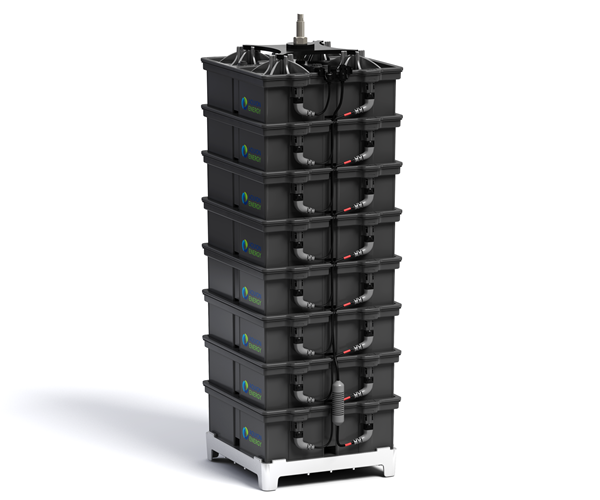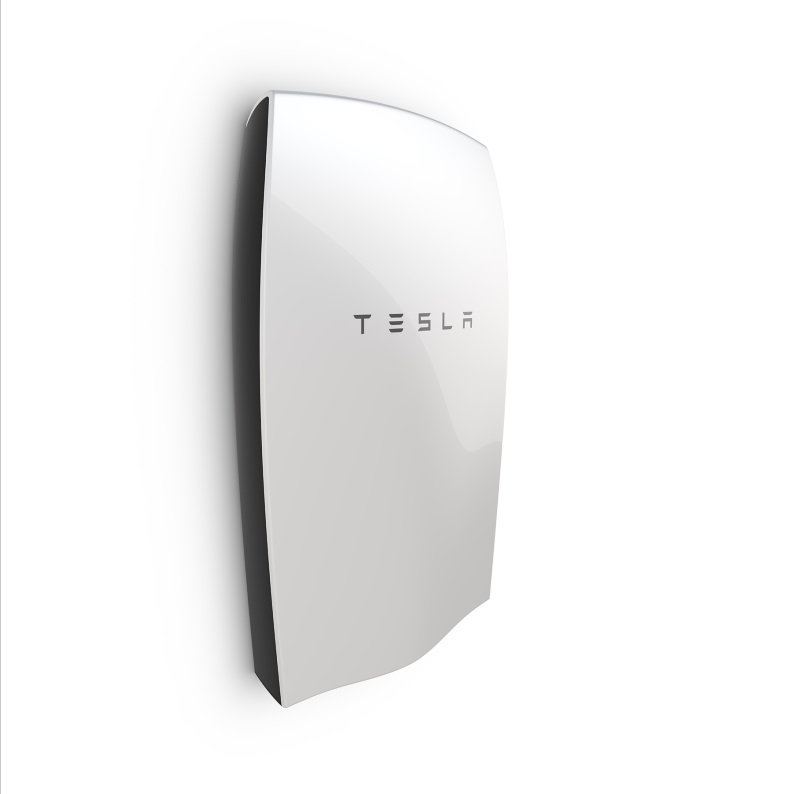Different battery storage products have different specifications and capabilities, making them better or less well-suited for various applications. In this article we’ll talk about ‘power batteries’ vs ‘energy batteries’ – two terms that are sometimes used to describe battery products.
Power batteries
Power is a term generally used describe instantaneous electrical output. You can think of the amount of power as being like a water tap opening and closing – the wider it can open, the more water can come out at a given time (provided the tank is full, of course – see the below section about ‘energy’).
For example, a 10 kilowatt (kW) solar array can produce a maximum of 10kW of power at a given moment. In fact, the amount of power it produces throughout the day rises and falls as the sun’s intensity grows and wanes, but it won’t produce more than 10kW. This array may produce 10kW of electrical power right around midday, but in morning and afternoon it might only produce 3kW, for example. (Usable power output would be slightly less after inverter and other system inefficiencies are taken into account.)
If your solar panel system is generating energy at full bore (let’s say 8kW), you should be able to run several devices in your home simultaneously without having to draw energy from the grid, provided that the devices don’t consume in total more than that much power. This might include a 1.5kW (1500 watts) vacuum cleaner, a washing machine on spin cycle using 1.2kW (1200W) and an air conditioning unit using another 1kW (1000W). All up, these devices would be using around 3.7kW of power – well under your solar system’s production curve. By contrast, you wouldn’t be able to run all of these devices simultaneously on solar alone later in the afternoon – although you would probably be able to run them one at a time.
Similar to solar panels, batteries also have power output properties – generally a ‘continuous’ and ‘maximum’ or ‘peak’ output (imagine: how wide can the tap be opened, and for how long?). But unlike solar panels, their ability to produce power is not of course limited by the sun – instead, their power output capacity is linked to their specifications, how they’re wired up, and the ambient conditions where they’re installed (batteries tend to not like heat) – as well as how much energy they have on reserve. (They will also be limited by the system inverter’s peak output, as the inverter is the part of the system that converters the stored DC electricity into usable AC electricity.)
Long story short, ‘power batteries’ are batteries that are good at ramping up quickly to meet a heavy electrical load. They can do this job even in situations where there is no need for large amounts of stored energy – for example in ‘solar smoothing‘ applications or for grid-connect solar systems that want a battery bank to help them meet their evening electrical demand. Lithium-ion batteries are the most commonly-used example of batteries that are good for power applications.
Tesla’s Powerwall is often described as a ‘power battery’.
Energy Batteries
If power is like a tap opening and closing, energy is like water. Imagine sunshine falling like rain on solar panels, which capture it and send it inside your home to power your devices or charge your batteries, or out into the electricity grid. Energy in your battery is like water in the tank.
When talking about solar panels, we see the term ‘energy’ used in relation to total system electrical output over the course of a day (or month or year, etc). A 10kW solar system in Sydney, for example, will produce roughly 39 kilowatt-hours (kWh) of usable energy on the average day. With regard to batteries, Tesla’s Powerwall (for example) can store 7kWh of energy (6.4kWh of which is usable – see our article about depth of discharge.) RedFlow’s ZCell can store 10kWh (all of which is usable).
‘Energy batteries’ are batteries that are good at storing a lot of energy, but may not necessarily have high instantaneous power output – or may suffer from performance degradation if ramped up too frequently and too quickly. Even with a lot of energy inside, these batteries may not be able to release it quickly to meet spiking electricity demand in your home unless they are wired up together to pool their collective power output. These types of batteries are generally well-suited for off-grid / stand-alone power systems, partial off-grid solar systems and grid backup applications. Lead-acid batteries are the most common example, but Aquion’s ‘saltwater’ AHI batteries have similar characteristics.
Aquion’s AHI battery is frequently described as an ‘energy battery’.
In summary
In reality, there is no thin hard line that separates energy batteries from power batteries. Nevertheless, they are helpful terms that are used when talking about battery applications and usage cases – and the more educated you are before you make a decision to purchase a battery storage system, the more likely you will be to make sure you choose wisely.
Compare solar & battery storage prices in Australia
Solar Choice can help you compare solar & battery storage offerings in your area of Australia. Just complete the Quote Comparison Request form to the right of this page (click ‘battery’ if you already have a solar system).
© 2016 Solar Choice Pty Ltd
- Running Cost of Air Conditioners – Explained - 7 October, 2025
- Air Conditioner Rebate South Australia: What You Need to Know - 19 September, 2025
- Air Conditioner Rebates in Queensland: What You Need to Know - 19 September, 2025
